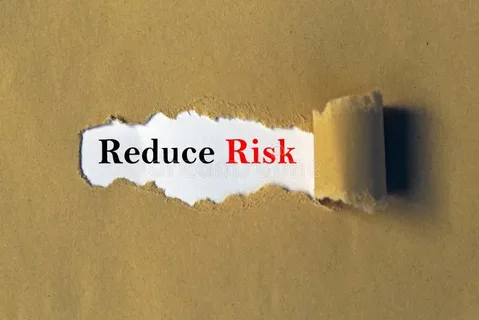-
NEUIGKEITEN
- EXPLORE
-
Blogs
Reduced Risk Products (RRP) Market Understanding Regional Adoption Trends and Cultural Acceptance Barriers Worldwide

The Reduced Risk Products (RRP) Market is growing worldwide, but not every region is adopting these alternatives in the same way. Local preferences, cultural norms, and government policies all play a big role.
Why Regional Trends Matter
When it comes to RRPs, one-size-fits-all strategies rarely work. What succeeds in one country may fail in another due to different regulations, user habits, or social beliefs. Understanding these regional patterns is essential for brands looking to grow internationally.
Some countries welcome these products as a way to reduce smoking rates. Others ban or restrict them due to safety concerns or cultural attitudes. Companies must pay close attention to these differences before entering new markets.
High Adoption in Asia-Pacific
The Asia-Pacific region, especially countries like Japan and South Korea, has shown strong support for RRPs. Japan was one of the first to widely adopt heat-not-burn tobacco products, and the country’s acceptance of technology-driven solutions helped the market grow quickly.
South Korea followed a similar path, and both markets continue to show high user engagement. The success here is due to a mix of strong urban populations, government openness to harm reduction, and early availability of advanced products.
However, this pattern does not apply to all of Asia. Countries like India have banned e-cigarettes entirely, and others still lack clear regulations.
Europe's Varied Approach
In Europe, the outlook for RRPs varies between countries. The United Kingdom has taken a supportive stance, often promoting RRPs as part of public health efforts to reduce smoking. This has encouraged strong market growth.
Sweden has also seen success, especially with oral nicotine products. The country's history with snus has paved the way for newer, safer formats.
On the other hand, countries like Germany and France apply stricter controls on advertising and flavors, slowing growth. Some Eastern European countries are still finalizing their policies, which adds uncertainty for brands and investors.
North America’s Push and Pull
The United States is a major player in the RRP market but also presents unique challenges. The FDA regulates these products through a strict approval process, and only a limited number of products have been cleared for sale.
At the same time, public concern about youth vaping has led to bans on flavored products in some states. These mixed signals have created both opportunity and caution.
Canada has a more progressive stance but also limits certain marketing practices. Still, both countries offer potential for brands that prioritize compliance and consumer education.
Middle East and Africa: A Market to Watch
In the Middle East, countries like the UAE and Saudi Arabia are opening up to RRPs. Regulatory frameworks are being developed, and products are entering stores through official channels.
This region holds promise due to its large population of adult smokers and increasing focus on health. However, cultural sensitivity and religious considerations affect marketing and product design. Companies must approach this region with care and respect for local norms.
Africa is still an emerging market, with uneven progress. Some countries are considering RRPs as part of harm reduction strategies, but others lack clear policy or enforcement. Distribution challenges also limit access in rural areas.
Latin America's Slow Start
Latin America has been slower to adopt RRPs. While smoking rates remain high in several countries, government action has focused more on tobacco control through taxation and education than on promoting alternatives.
Brazil, for example, has banned e-cigarettes, while Mexico has taken a stricter approach in recent years. In contrast, countries like Chile and Colombia are considering new laws to allow regulated use.
Cultural views on smoking and health also influence acceptance. Some populations remain skeptical of new products and prefer traditional cessation methods. Education and trust-building will be key to changing minds in this region.
Cultural Barriers Beyond Regulation
Aside from laws, culture plays a major role in how RRPs are accepted. In some areas, smoking is still a social norm, making alternatives less appealing. In others, smoking is viewed negatively, and switching to RRPs is seen as a personal improvement.
Religious beliefs can also influence how nicotine use is perceived. In certain communities, using any substance may be discouraged, regardless of the health benefits of switching to a less harmful product.
Brands must listen carefully to local values and tailor their messaging to fit the social tone of each region. What works in a tech-driven city may not resonate in a conservative or rural town.
Importance of Local Partnerships
To succeed globally, many RRP companies work with local partners. These partners understand the legal system, distribution networks, and cultural sensitivities. They also help navigate the media landscape and build trust with consumers.
Partnerships can take the form of joint ventures, licensing agreements, or retail alliances. This approach allows global brands to stay relevant in local markets without overstepping cultural or legal boundaries.
Conclusion
The Reduced Risk Products (RRP) Market is not growing the same way everywhere. Each region has its own set of opportunities and challenges shaped by regulation, culture, economy, and consumer behavior.
Companies that succeed in this space will be the ones that do their homework. They will study local laws, respect cultural values, and adjust their strategies to fit the needs of different populations.
By understanding regional adoption patterns and cultural barriers, brands can build products and campaigns that connect deeply with local users while supporting global growth.






